Affiliate links on Android Authority may earn us a commission. Learn more.
Everything you need to know about kettlebells for awesome home workouts
If you’re stuck at home with no access to a gym during lockdown, chances are you’ve been exploring your options. Bodyweight training (calisthenics) has quickly gained popularity as a result, and more people than ever are now bashing out huge sets of push-ups and sit-ups.
But that’s just one option. Another is to try a kettlebell workout routine.
A single 20kg kettlebell will provide a huge range of training options and replace a lot of the equipment you might be missing at the gym. Not only that, but kettlebell training hides a lot of hidden depth: it’s just a matter of how far you want to take it.
Kettlebells are affordable, compact, and don’t require a lot of shape. And while they were all out of stock for a while, Amazon has plenty of options available again now. But where do you begin? Read on to learn how to devise the best kettlebell workouts for amazing results.
Also read: The best home fitness streaming services: Bring the gym class to you
Kettlebells: The basics
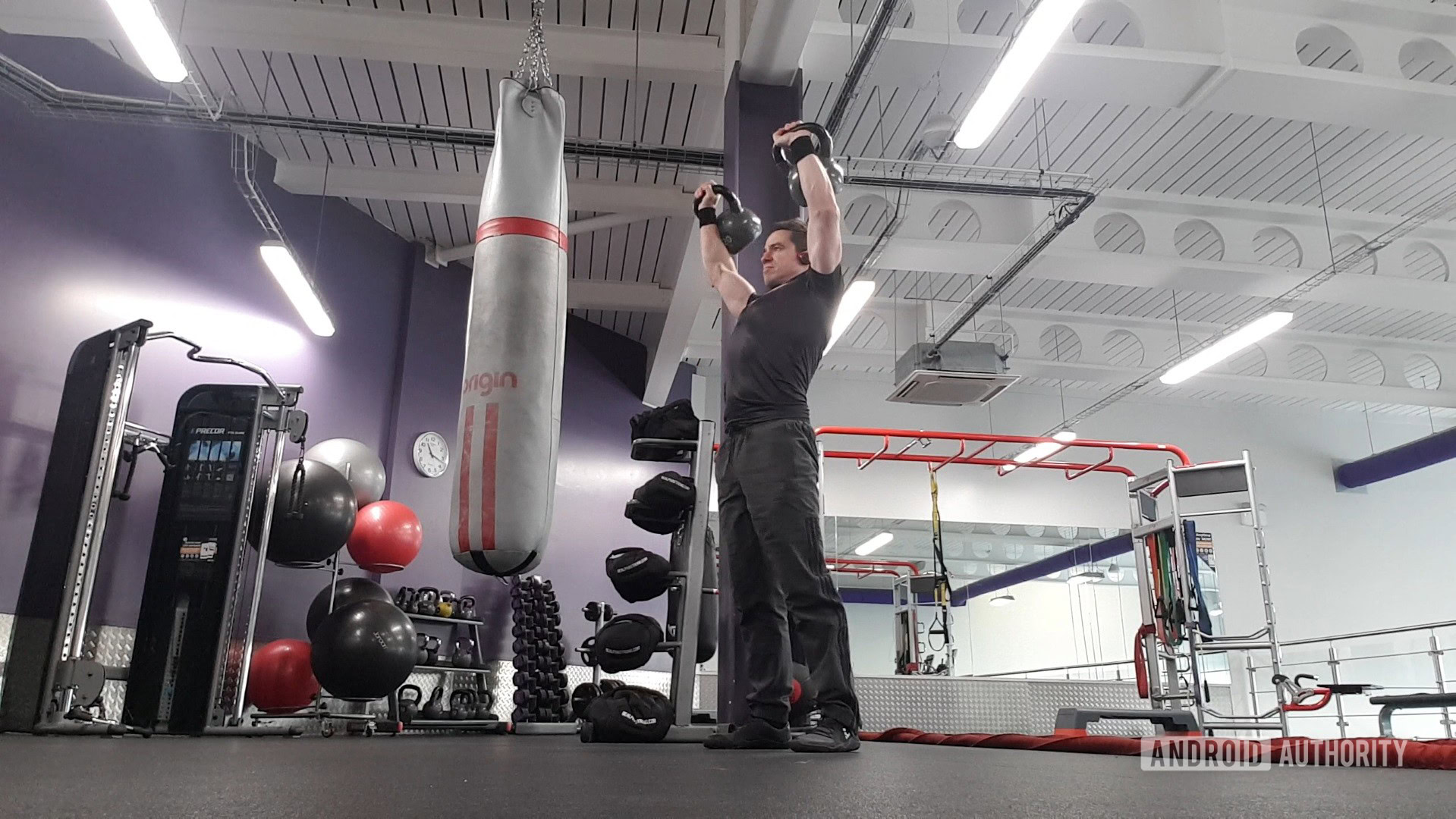
Kettlebell training originates from Russian farmers, who used the weights (known as girya) to counterbalance when measuring crops. That said, some similar implements have been found dating back to Ancient Greece (called “halters”).
Kettlebells look like cannonballs with a handle sticking out the top and a flat bottom. You can grip the kettlebell with one or both hands and wield either one or two at a time. They are measured in “pood,” where one pood is 36.11lbs. Commonly, you’ll find kettlebells weighing 1, 1.5, or 2 poods, but you can also buy them by kilogram.
The benefit of this unique shape compared with a dumbbell is that the center of gravity is not at the point of contact with the hand. That means you can create leverage, and it also means that you can swing the weight. This is what distinguishes a kettlebell workout from other forms of training.
Curling dumbbells or squatting barbells are great ways to get in shape, but they all involve moving in straight lines through a constrained movement pattern while the weight stays fixed in place.
In terms of real-world, functional strength, this isn’t particularly realistic. When was the last time you had to lift or push something while everything around you remained perfectly static? When did you ever repeat the precise same movement more than once a day?
In a wrestling match, you are required to brace your entire core against the torque being delivered by an opponent while simultaneously pushing from your legs, hips, and shoulders to move them. And when they switch up their strategy, you need to adapt to that change in an instant.
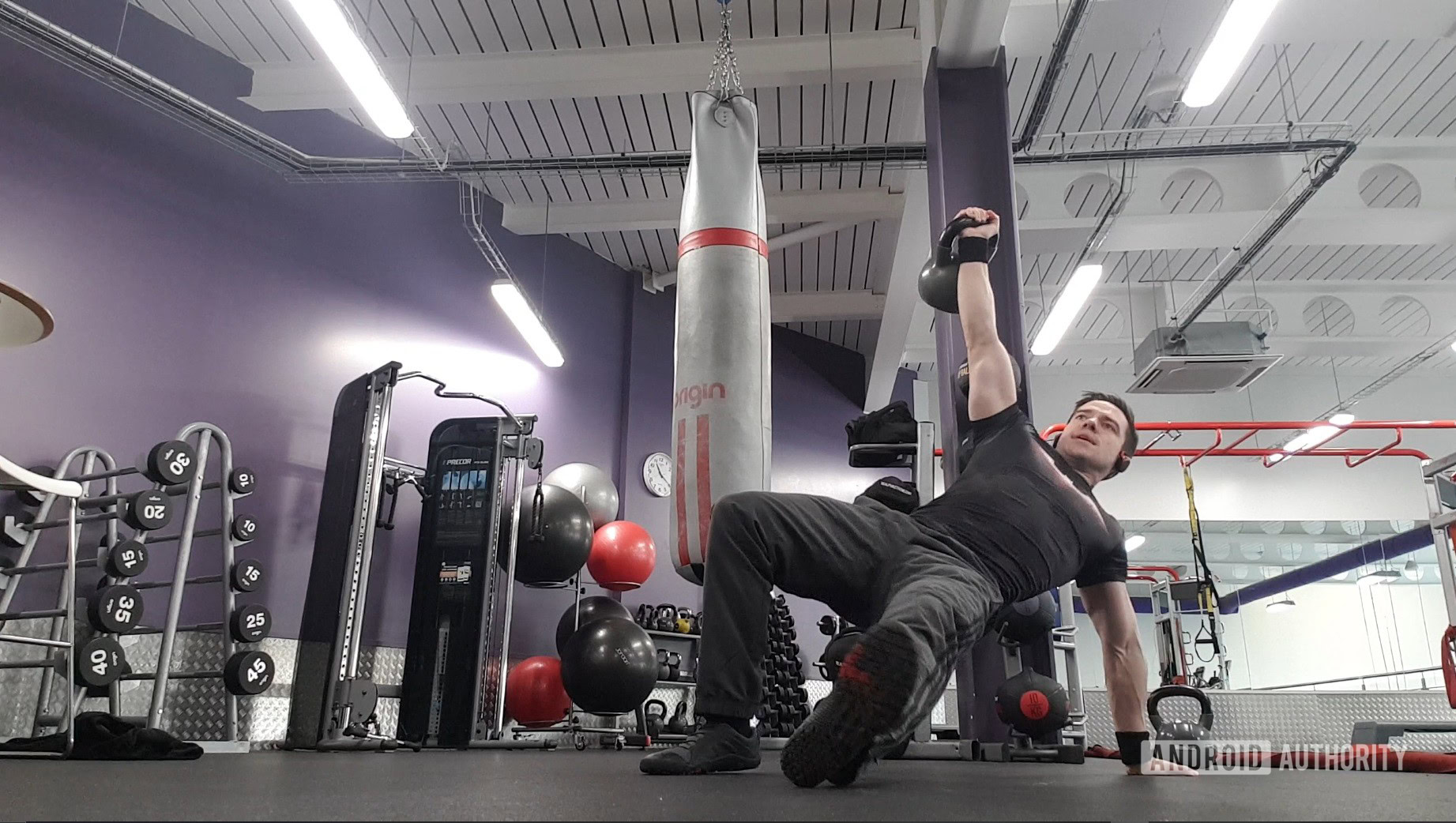
When carrying shopping, you need to hold an unstable weight while walking. And when lifting a pram out of a trunk with one hand while holding your baby with the other… you get it!
When you swing a kettlebell, you’re forced to contend with a constantly moving and changing force. This develops incredible core stability and athletic power while also building grip strength. This is fantastic for athletes, martial artists, and anyone who wants to build strength that is useful in the real world.
When you swing a kettlebell, you’re forced to contend with a constantly moving and changing force.
What’s more, kettlebells lend themselves to continuous and repetitive movements. This is great for developing explosive power, but it also means you can train with lighter weights for long periods. Thus, kettlebells can be used to burn calories quickly as a form of metabolic conditioning (resistance training performed as cardio).
Whether you’re looking to build muscle, increase your mobility, develop athletic power, or burn fat, kettlebells are a brilliant choice.
How to train with a kettlebell: Moves and tips for your kettlebell workout
Had enough of the theory and want to get started? Let’s look at how to devise a kettlebell workout by taking the best moves for your goals.
First, pick a weight that is suitable for you. If you’re starting with little strength training, finding a weight of around 15% of your body weight is a good start (about 10kg). For those with a little more experience, 30% is a better starting point.
The first move that everyone should learn is the kettlebell swing.
The first move that everyone should learn is the kettlebell swing. This is the “king” of kettlebell exercises and deserves a place in any kettlebell workout routine.
How to kettlebell swing for weight loss
To perform a kettlebell swing, you will place a single kettlebell on the floor in front of you and lift it slightly off the ground using a deadlift technique. That means feet pointing forward or slightly out, then hinging at the waist with a straight back while bending slightly at the knees to grasp the handle with two hands. Stand up straight and, as you do, thrust forward to straighten the hips and propel the weight upward.
The aim is not to “lift” the weight with the shoulders and arms but to guide it through its natural trajectory. The explosive hip thrust should be all you need to provide propulsion. Keep your arms straight as the weight hangs in front of you at about shoulder height for a moment, then guide it back down and behind you as it moves through your legs. To facilitate this motion, you will need to bend forward at the hips again (with no arch in the spine) and bend the knees slightly. Once the weight has traveled as far as it will go, you’ll snap back and repeat the motion in the opposite direction: exploding through the legs and hips to send it back up again. It should resemble a pendulum once it is in full “swing.”
A brilliant tool for burning fat.
This movement can be used for a high number of repetitions (50 or more) which makes it a brilliant tool for burning fat and building powerful glutes for jumping and running. Focus on guiding the weight and using the stretch-shortening cycle (the natural “bounce” in your body) to generate momentum at the bottom of the movement. You can also use this as a form of high-intensity interval training by setting timers — this will melt fat off your body!
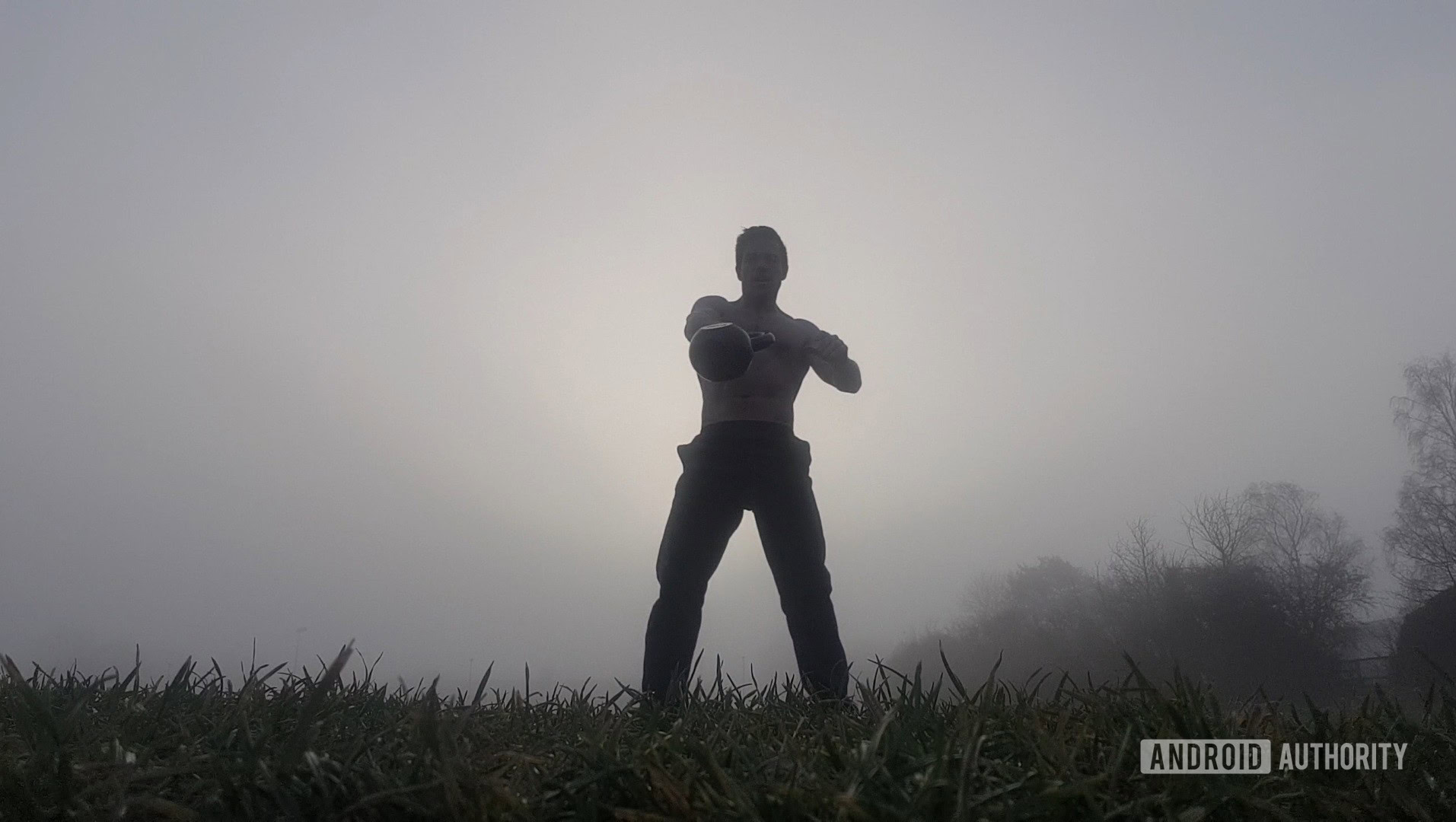
This one move is all you need for an effective kettlebell workout if weight loss and toning are your primary goals!
This one move is all you need for an effective kettlebell workout if weight loss and toning are your primary goals!
There are countless variations on the kettlebell swing for those who want more variety in their kettlebell workouts. How about the kettlebell skier swing, for instance. This places a kettlebell in each hand and challenges you to let them swing down by your sides.
Alternatively, you can perform a kettlebell swing with more explosive intent. Known as a “hardstyle kettlebell swing,” this method teaches muscle control using concepts from Goj-ryu karate. This latter style has more application for fighters and athletes, and I recommend looking into it if you want to learn just how nuanced kettlebell training can be.
Pressing movements and squats
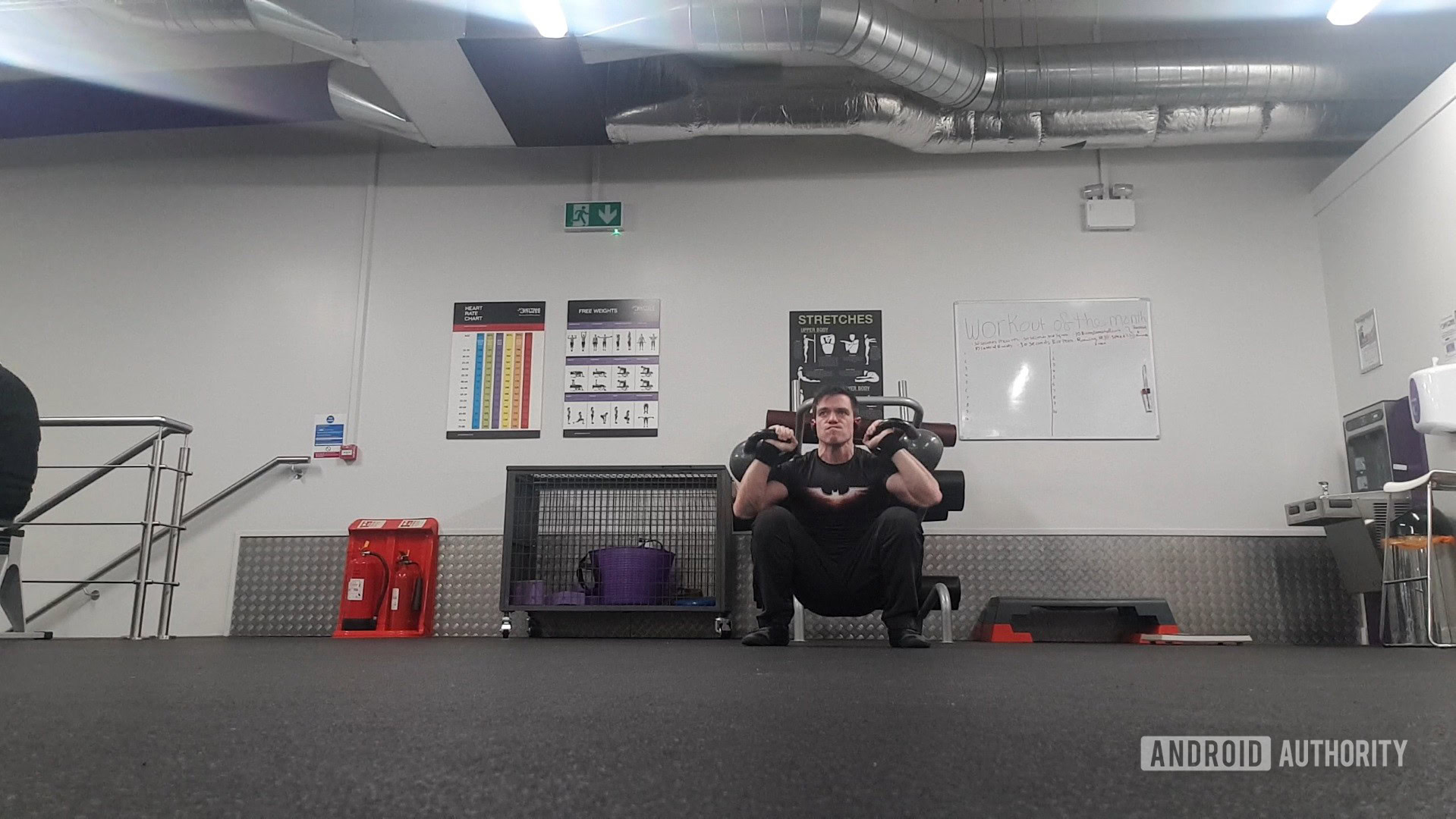
Alternatively, you can use a kettlebell as a tool for full-body compound pressing and squatting movements. This is perfect for replacing a barbell and a rack if you don’t have access to one at home (though the weight will be lighter for most people).
For example, by holding a single dumbbell in front of you with two hands, you can perform goblet squats that will provide less resistance than a heavy barbell but focus more on the quads. The same position also works for lunges or Bulgarian split squats.
If you need more weight, you can alternatively take two kettlebells and hold them in the “racked” position while squatting. This means they will be held at shoulder height, with your wrist straight and the kettlebell leaning against the side of your forearm and bicep. This position allows you to comfortably hold the weight for long periods while challenging your legs through a wider range of motion.
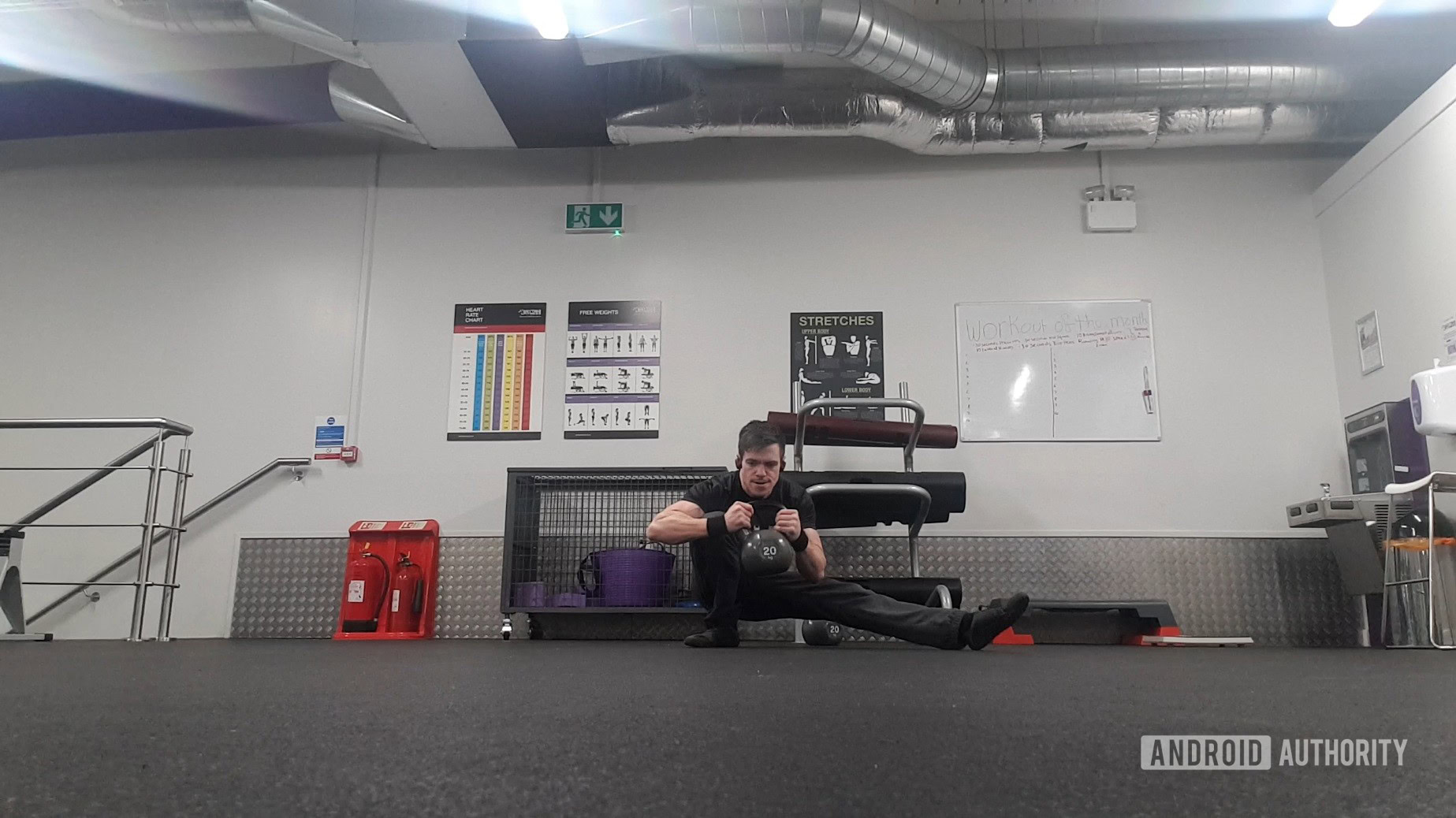
For more of a challenge, you can also try performing Cossack squats: you’ll lunge down onto one leg while keeping your other leg outstretched. This not only places more resistance on a single leg but also improves hip mobility.
Alternatively, you can make this into even more of a whole-body movement by performing a clean and press. That means you’ll be lifting the kettlebell from the floor each time and then pressing it overhead. You can also add a press to nearly any squatting movement.
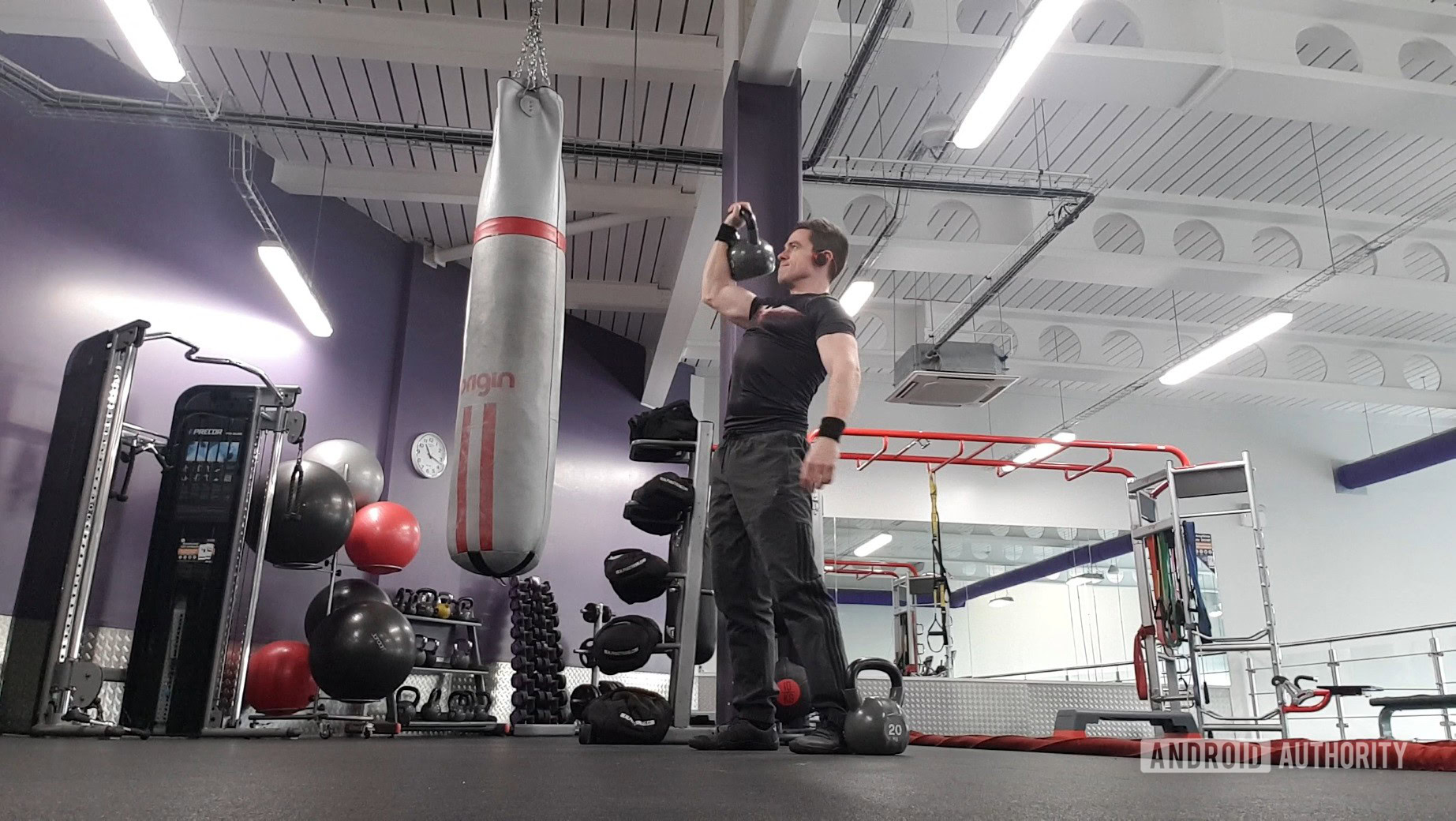
And if you’re a bit more ambitious and want to build some explosiveness, you can even perform snatches and jerks with a kettlebell.
Countless more options for your kettlebell workouts
There are countless other options for kettlebell workouts that you can explore. For example, you can use other resistance-cardio exercises like the ballistic kettlebell row to burn fat and tone. If building more functional strength is your interest, then kettlebell halos are fantastic for opening up your shoulders, while figure 8s develop core stability. Here, you loop the kettlebell around your head and weave it through your legs, respectively.
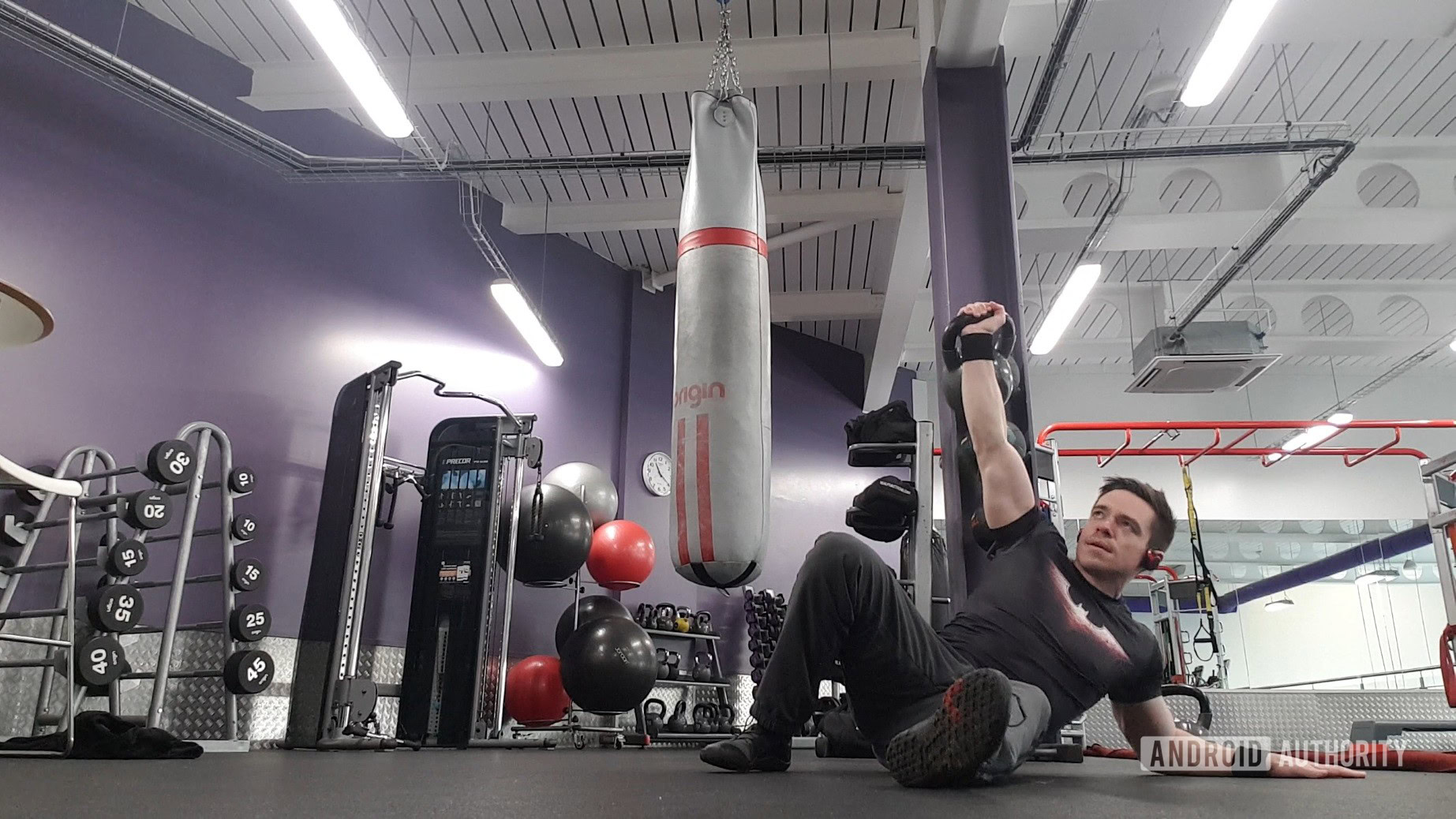
One of the most infamous moves of all, made famous by kettlebell-legend Pavel Tsatsouline, is the Turkish Get-up. This move involves holding a single kettlebell over one shoulder and then keeping it there while standing up from a position where you’re lying flat on your back. Make sure to watch some tutorials before giving this one a go. Once mastered, though, it represents a full-body workout that does wonders for your shoulder and core.
If you want to take your kettlebell workouts even further, here is a whole world out there to explore. Kettlebell “flows” are popular on Instagram and YouTube right now, for example. These involve transitioning between multiple different movements (around 3-6) for a single rep and then repeating. This is a cardio-intensive training style perfect for challenging your ability to transition between those fixed movements (where most of us are weakest).

If you’re completely nuts, you can even add kettlebell juggling to your kettlebell workouts! Yep, that’s exactly what it sounds like.
That was something of a whistle-stop tour, but I hope it introduced you to the basics of kettlebell workouts. You should now have a decent idea of how to start using these amazing tools to build functional strength or burn away the fat. Hopefully, you now understand what makes them so popular and how deep the rabbit hole goes. See what appeals to you, and then get Googling!